Zwolle – In Museum de Fundatie in Zwolle is woensdagmiddag een tot dusverre onbekend doek van Vincent van Gogh gepresenteerd. De molen ‘Le blute-fin’ is midden jaren zeventig verworven door de oprichter van het museum, Dirk Hannema.
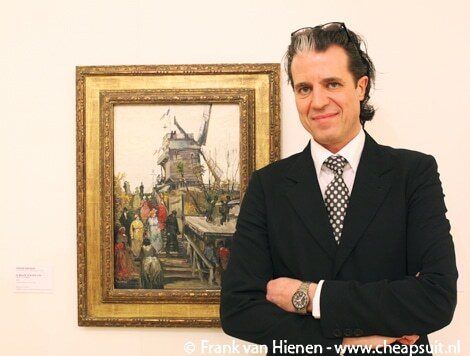
Directeur Ralph Keuning bij de mooie aanwinst…
Recent onderzoek van het Van Gogh Museum in Amsterdam heeft uitgewezen dat het schilderij toe te schrijven is aan Vincent van Gogh. De presentatie woensdag was gelijktijdig de opening van een tentoonstelling die gewijd is aan deze bijzondere ontdekking.
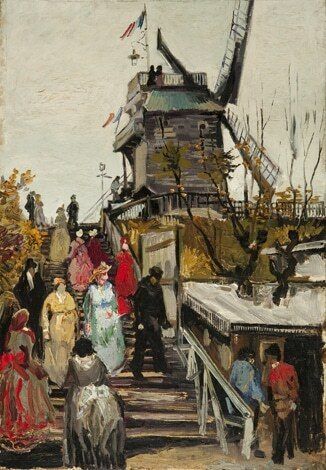
De molen ‘Le blute-fin’
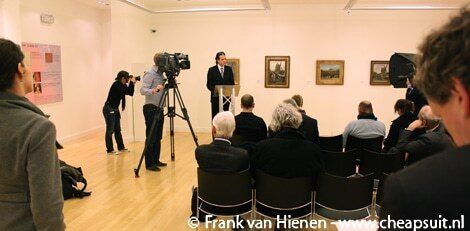
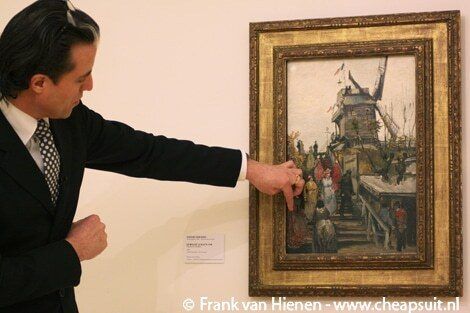
Hannema en De molen ‘Le blute-fin’
In 1975 kocht Dirk Hannema – oud-directeur van het Rotterdamse Museum Boymans en kunstverzamelaar – bij kunsthandel Hein in Parijs een molengezicht. Op basis van zijn kennis en intuïtie schreef hij het schilderij toe aan Vincent van Gogh en dateerde het in 1886. Door Hannema’s twijfelachtige reputatie op het gebied van toeschrijvingen kreeg dit werk echter geen enkele aandacht. “Deze vondst is geen toeschrijving, maar een absolute zekerheid”, verzekerde Hannema. Precies 35 jaar na zijn aankoop heeft hij gelijk gekregen.
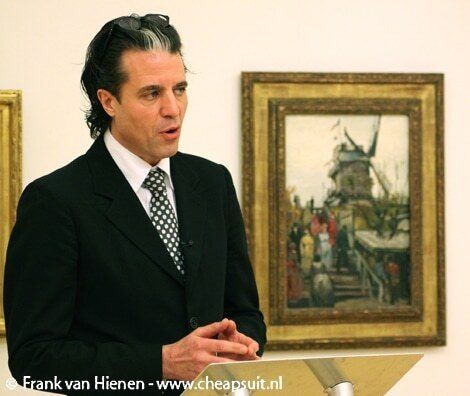
Onderzoek
Dankzij grondige studie door het Van Gogh Museum in Amsterdam is nu vast komen te staan dat het doek De molen ‘Le blute-fin’ daadwerkelijk van de hand van Vincent van Gogh is. Conservator Van Gogh onderzoek dr. Louis van Tilborgh en hoofd restauraties dr. Ella Hendriks, beiden verbonden aan het Van Gogh Museum, lichten de toeschrijving toe in De ontdekking – Vincent van Goghs De Molen ‘Le blute-fin’ in de collectie van Museum de Fundatie (Uitgeverij Waanders), waarvan The Burlington Magazine in juni een Engelstalige versie zal publiceren.
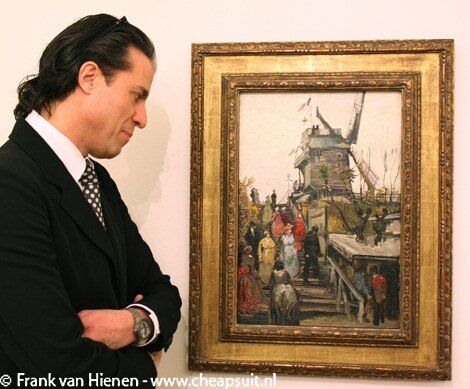
Tentoonstelling De ontdekking
De tentoonstelling die gewijd is aan dit ontdekte werk van Vincent van Gogh is tot en met zondag 4 juli te zien in Museum de Fundatie – Paleis aan de Blijmarkt, Zwolle. Naast De molen ‘Le blute- fin’ worden er twee stijlverwante schilderijen van Vincent van Gogh (collectie van het Van Gogh Museum en collectie Noro Foundation) gepresenteerd en één schilderij van Arnold Hendrik Koning (collectie Van Gogh Museum). Verder zijn er werken tentoongesteld die Dirk Hannema verwierf bij kunsthandel Hein, waaronder schilderijen van Huet en Troyon, tekeningen van Redon en Millet, laat-middeleeuwse sculptuur en een beeld van Degas.
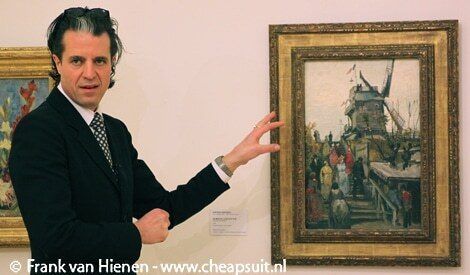
“Museum de Fundatie beheert een omvangrijke collectie beeldende kunst die zijn oorsprong vindt in de verzameling van de oud-directeur van Museum Boymans, Dirk Hannema en later belangrijke aanvullingen kende met ondermeer de kunstcollectie van de Provincie Overijssel. Museum de Fundatie heeft twee schitterende locaties: Kasteel het Nijenhuis bij Heino en het Paleis aan de Blijmarkt in Zwolle.”
Museum de Fundatie wordt ondersteund door de BankGiro Loterij.
Tentoonstelling: De ontdekking – Vincent van Goghs De molen ‘Le blute-fin’ in de collectie van Museum de Fundatie
Locatie: Paleis aan de Blijmarkt, Blijmarkt 20, Zwolle

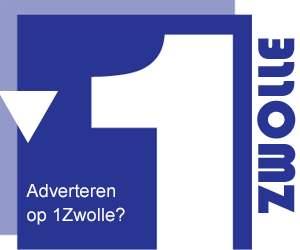
Gaaf zeg, zo’n uniek, kleurrijk en ongetwijfeld zeer waardevol stuk!
Gelijk door verpatsen aan de hoogste bieder.
Of vernietigen: linkse hobby’s!
Ontopic: zo lang het mogelijk is, houden in Zwolle.
Weblog Zwolle had volgens onze informatie de primeur voor het nieuws over de ontdekking van het schilderwerk van Van Gogh in Zwolle. We hebben het hier over groot internationaal nieuws!
Proficiat!
:D:D:D voor het onvolprezen weblogZwolle
Hopen dat dit het museum flink wat bezoekers oplevert…
Zo zo, zelfs een echte wereldprimeur voor Weblog Zwolle. 😀
Strikken die schoenveters!!! 😉
Leuk om weer eens een ander werk van Van Gogh te zien. Maar jee, wat een hoog Schilderen-op-nummer gehalte!
Dus toch! Ik heriner me een verhaal van Ralph, toen hij net begonnen was bij de Fundatie. Het schilderij zou onderzocht worden, vanwege het vermoeden met een Van Gogh van doen te hebben.
Dan is het toch mooi, dat het echt zo is. Gefeliciteerd.
Scheelt weer een bak subsidie voor de fundatie, er komen meer bezoekers. Dus die subsidie kan naar een ander toe.
Ja Ingrid geen garantie stelling voor de Fundatie,maar toch mooi dat het gebeurd,komt Zwolle weer op de Schilderij ipv op de kaart
Vind dit geweldig, heb niet zo veel verstand van kunst, weet alleen wat ik mooi of lelijk vind. Maar ik denk dat vanaf dat Die Ralph (achernaam??) er zit, er toch al heel wat leuke publiekstrekkende tentoonstellingen zijn geweest, en dat is een compliment waard, mag ook wel eens gezegd worden vind ik.
Inderdaad Ingrid een positief geluid in deze dagen van KRAMER en Kwel mag ook wel eens en de Fundatie komt toch regelmatig in beeld die rijden maar zo geen scheve schaats
@Ingrid: voorzichtig met dat subsidievoorstel: straks trekt de Bankgiro-loterij zich terug;)
@ingrid: helemaal mee eens. Steeds weer spraakmakend wat ze daar doen. Complimenten!
Hoeven we niet meer te bezuinigen!
Foto-update!
Woehoeee positief zwols nieuws!! Gefeliciteerd WLZ! En gefeliciteerd Fundatie natuurlijk 😀
De waarde stijgt naarmate de vraag stijgt, en de vraag bij van gogh is erg groot.
Ik denk niet dat zijn werk miljoenen kost.
De vraag, de geschiedenis en de imago heeft hij te pakken, daarvoor betalen mensen ervoor.
Het is toch wat met de populariteit van deze linkse hobby :o:o:o
Nu op 3fm De Zwolse van Gogh….
Dat is leuk nieuws voor de fundatie, zeker gezien de reputatie van dhr Hannema niet geheel onbevlekt is mbt vervalsingen (&meer..)! Dus gefeliciteerd, ik kom hem binnenkort bekijken 🙂
Mooie aanwinst voor het museum en voor Zwolle. Schitterende foto’s ook!
Zo denkt de Engelstalige editie van het NRC erover over:
SMALL…
Tsja ADMIN Londen is Big 😉
Washington Post
Van Gogh experts authenticate unusual VG painting
This image released by Museum de Fundatie, Zwolle, Netherlands, on Wednesday, Feb. 24, 2010, shows a painting entitled “Le Blute-Fin Mill”, by Vincent van Gogh. The newly authenticated Van Gogh has gone on display 35 years after an art collector bought it in Paris, convinced it was painted by the famed Dutch master but never able to prove it. Louis van Tilborgh, curator of research at the Van Gogh Museum in Amsterdam, said “Le Blute-Fin Mill” was done in 1886. He said its large human figures are unusual for a Van Gogh landscape but it has his typically bright colors. (AP Photo/Museum de Fundatie, Zwolle) (AP)
Enlarge Photo
TOOLBOX
Resize Print
E-mail
WHO’S BLOGGING
» Links to this article
By ARTHUR MAX
The Associated Press
Wednesday, February 24, 2010; 11:37 AM
AMSTERDAM — Dirk Hannema was known as a brilliant art curator but a bit of a fool. He claimed he had seven Vermeers in his collection, several Van Goghs and a few Rembrandts, but no one believed him.
Now 25 years after his death it turned out he was right – about one work by Vincent van Gogh.
The painting, “Le Blute-Fin Mill,” goes on public display Wednesday in the small Museum de Fundatie in the central Dutch town of Zwolle.
Louis van Tilborgh, curator of research at the Van Gogh Museum in Amsterdam, said the painting was unusual for the 19th century impressionist, depicting large human figures in a landscape. The painting shows Parisians climbing wooden stairs to a windmill in the Montmartre district.
But the work was typical of Van Gogh’s at that time in other ways, with its bright colors lathered roughly on the canvas. Van Tilborgh said it was painted in 1886 when the artist was living in Paris. The canvas bore the stamp of an art store he was known to frequent, and used pigments that were common in other works, van Tilborgh said.
The painting “adds to his oeuvre,” the curator told The Associated Press. “You can link it to certain works of Van Gogh in that period, but not that many of them,” he said.
It is the first Van Gogh to be authenticated since 1995 and the sixth to be added to the confirmed list of the artist’s paintings since the latest edition of the standard catalog was published in 1970, van Tilborgh said.
Van Gogh painted about 900 works in his brief career. Afflicted by mental illness, he died of a self-inflicted wound in 1890 at age 37.
Hannema bought the painting in 1975 from an antique and art dealer in Paris who did not believe it was of much value. But the Dutch collector did. He paid 5,000 Dutch guilders for this and another unknown work, or about euro2,000 ($2,700), but immediately insured the painting for 16 times what he paid.
Hannema touted the painting with “absolute certainty” as a Van Gogh, but no one was listening. He had been discredited since he bought a Vermeer in 1937 that later was shown to be a forgery.
Hannema became director of the respected Boijmans Museum in Rotterdam in 1921 at age 26. Born to a wealthy art-collecting family, he was talented, successful, good looking and supremely confident in his judgment of art, said Ralph Keuning, the director of Museum de Fundatie.
During the Nazi occupation of the Netherlands he was given responsibility for all the museums in the country. After the war in 1945 he was arrested and stood trial for collaboration, but he was never convicted and was released from internment two years later.
He continued to add to his own collection, seeking out high quality work by lesser known artists and always looking for unattributed works of masters. He was mistaken nearly all the time.
“He was the laughing stock of the art world,” van Tilborgh said. “His tragedy was that he was always thinking in terms of the big names.”
In 1958 Hannema created an institute for his collection and was allowed to live in Nijenhuis Castle in the village of Heino on condition that he allow public access to the works, which included many fine classical and modern pieces. Some were on permanent display in two small buildings on the grounds, and he conducted tours by appointment of his home until his death in 1984.
Keuning said Le Blute-Fin Mill was not prominently displayed during Hannema’s lifetime. “He was more obsessed by his Vermeers,” which he believed to be authentic.
The collection formed the bulk of the Museum de Fundatie, one of the smaller institutions in this museum-rich country. It acquired another palace in the nearby town of Zwolle in 2005. More than half of the 7,000 items in its possession comes from Hannema’s collection, said museum spokesman Koen Schuurhuis.
The museum had sought once before, in 1993, to have experts authenticate Le Blute-Fin Mill to prepare for an exhibition, Schuurhuis said. But the Amsterdam experts had no time, and the painting went on display as a work that Hannema “claimed” was a Van Gogh.
Mooie opsteker voor de Fundatie. Na Krabbe zorgen ze nu weer voor zeer goede pr voor de stad. Mooi dat ze zo gegroeid zijn daar!:)
Stoer!! moet je ’s googlen op Zwolle en Gogh (Google news). Echt wereldnieuws, honderden artikelen in tientallen talen
Leuk zo’n schilderij, maar daar is de fundatie niet op ingericht. Beveiliging en verzekering zullen moeten worden verhoogd en daar is geen geld voor.
Wat levert zo’n schilderij eigenlijk op in de zwarte handel?
Leuke fotos van die fotograaf van Hienen. Fotos beelden een verhouding van Keuning met de schilderij.
This painting is probably fake for 3 raisons: 1)People inusually,giant figures; 2)two trees that appear to sprout from a roof (right-hand side of painting) because they go against nature. Could it be that a forger mixed two plants on a roof with the branches of a tree in a courtyard that are visible from the same view point in an other painting by Van Gogh destroyed on fire; 3)Error in the perspective bannister of flight of steps;
Van gogh drawing F.1396a proof my thesis is correct:it is demonstrate the absence of the two trees that appear to sprout from a roof (right-hand side of painting).
The perspective of painting is very very wrong.It is sufficient surposing the drawing F1396a that have the same point of view.
Dirk Hannema says to buy the painting at Rickel Jachine-Hein gallery in Paris 1975?Rickel Jachine-Hein(painter) is died 1972(1897/1972),his husband,Béla Hein,art dealer and collector in antiquity, is died 1931. Dirk Hannema says the truth?
Comme il est possible que dans un ville comme Paris qui pullule de connoisseurs d’art,un hollandais va acheter un Van Gogh pour moin de 2 mille euros en 1975 dans une galerie qui existait du 1923? La chose à mon avis n’aurait pas et? possible dejà en 1901.
La reponse de M.Jolein Kregten à moi sur le blog de la restoration de la chambre du Van Gogh Museum n’est pas convainçante.Comme pouvez vous à priori
affirmer que la date 1972 de dec?s de Madame Rickel Hein est un erreur
d’estampe,si vous ne savez pas meme la date vrai du dec?s?Elle aurait
ecrit une lettre en 1977.de consequence ne pouvait etre deced?e en 1972.
N’est pas un moyen serieux d’affronter un probleme par un historien
d’art.Moi je serais all? ch?z la mairie de Paris à controller,comme je
ferais.Au contraire n’est pas possible que Hannema aje contrafait des
documents pour demontrer la juste provenance?
Helemaal eens met Antonio.:)
Antonio De Robertis heeft op persberichten over dit onderwerp gereageerd met dezelfde tekst. Je kunt het dus af doen als spam… Berichten van Antonio De Robertis verwijderen en slotje op het onderwerp lijkt mij wenselijk.
Les gents mortes n’ecrivent pas des lettres!Si la lettre du 1977 a une signature fausse,pourquoi le tableau devrait etre original?Le catalogue de l’expo n’indique pas la date de dec?s de Rickel Jachine Hein,ça veut dire que personne l’a cherch?e.
Wie is Antonio? Het zou handig zijn als er in Nederlands werd getypt. Misschien een reden voor weblogzwolle om deze man te blocken? of is dat niet mogelijk? Begint erg vervelend te worden inmiddels>:(
Nou Antonio dat kan je allemaal wel zeggen maar helemaal gelijk kan ik je niet geven.
Kijk als ze dat stuk nu verpatsen dan worden ze er financieel wel wijzer van.
En wat betreft die handtekening (12.38) tja die kan ik ook wel zetten
wat kriegge wie noe, ik bedoele 12.38 en dan tussen heukies
Je vous prie de me repondre en italien ou francais.Je ne comprend pas l’hollandais.Merci en avance
Nee Antonio, je moet bij Derk zijn…niet hier. Ok dit gaat ook wel over handel, maar via dit draadje kun je nixxx kopen. Succes!
Da Wett ikke, du skal nie komme fra dy lande. Jeg fra holland bra jeg kan og so snakke uitlands
@Koko ; baaije goe!